Lifestyle in Nursing Students at a University of North Lima
Volume 6, Issue 1, Page No 164-168, 2021
Author’s Name: Yanet Cruz Flores1, Tania Retuerto-Azaña1, Jaquelin Nuñez-Artica1, Brian Meneses-Claudio2,a), Hernan Matta Solis1, Lourdes Matta-Zamudio1
View Affiliations
1Faculty of Health Sciences, Universidad de Ciencias y Humanidades, 15314, Lima-Perú
2Image Processing Research Laboratory (INTI-Lab), Universidad de Ciencias y Humanidades, 15314, Lima-Perú
a)Author to whom correspondence should be addressed. E-mail: bmeneses@uch.edu.pe
Adv. Sci. Technol. Eng. Syst. J. 6(1), 164-168 (2021); ![]() DOI: 10.25046/aj060118
DOI: 10.25046/aj060118
Keywords: Lifestyle, Nursing students, Healthy, Unhealthy, Academic Performance
Export Citations
Healthy lifestyles were proposed to improve the health status of the university population, they are a set of behaviors that are reflected according to the type of situation and behavior of each person who performs it during the period of their training, the inappropriate lifestyles provides many problems, which are non-communicable diseases that manifest in the health status of each individual, which most of the time students choose to consume less nutritious foods and they are not healthy and affect their health; inadequate lifestyles do not provide good academic performance and also generate a bad psycho-emotional state. The objective of the study is to determine the Lifestyle in nursing students at a university in North Lima, 2019. As results, regarding the Lifestyle in nursing students at a university in North Lima; 51.5% have healthy lifestyle and 48.5% have an unhealthy lifestyle. Regarding the dimensions, interpersonal relationships predominate 73.8% have an unhealthy lifestyle followed by stress management, 65.8% have an unhealthy lifestyle, responsibility for health, 63.3% have a lifestyle unhealthy, Physical activity dimension, 60.8% have an unhealthy lifestyle, spiritual growth, 48.8% have an unhealthy lifestyle, healthy nutrition, 29, 5% have an unhealthy lifestyle; it is important to know those results to make decisions.
Received: 03 August 2020, Accepted: 19 December 2020, Published Online: 15 January 2021
1. Introduction
In the Republic of Ireland in September 2016 they have shown that university life transition has a negative effect on student lifestyles, resulting in weight gain, increased physical inactivity and stress [1]. University students go through a variation of changes in their mental, physical, social, and economic lives during their university life [2].
The university stage is characterized by a tendency to engage in a variety of unhealthy behaviors [3]. Evidences suggest that nursing students do not engage in healthy lifestyles such negative behaviors lead nursing students to become overweight and obese, as well as other risks such as smoking, alcohol consumption, drugs, an insufficient diet and poor physical activity [4], [5].
According to the research, it has carried out a technical reform that aims to educate the entire community, regarding issues related to nutrition, promoting healthy practices for a proper life and to prevent diseases such as anemia and chronic malnutrition, as well same regarding overweight, obesity, diabetes, cardiovascular disease, high blood pressure and cancer. This technical document aims to promote the functions of exhaustive care and health promotion in the university population [6].
Unhealthy habits are factors that predominate in university students. According to studies, it is evident that they do not perform physical activity; they do not complete their sleep hours; they eat fast food [7], the negative effects are evident when they reach the adult stage, which causes health problems in older life The evidence shows that regular physical activity helps maintain good health styles and prevents diseases such as hypertension, obesity, metabolic syndrome, heart disease, diabetes, osteoporosis, some types of cancer, and produces significant benefits at the psychosocial level [8]. In this university stage, a sum of difficulties are manifested, likewise this type of qualities is linked to inappropriate health behavior; therefore, it should be noted that it is significant to determine certain health behaviors that are inadequate and have a much higher risk of suffering from non-communicable diseases [9].
In Peru in 2018, more than 50% of the disease burden is associated with non-communicable diseases, which affect all age groups. Tobacco use, harmful use of alcohol, unhealthy diet, infrequent physical activity. Approximately 62 million people have Type 2 Diabetes. Cancer is the second leading cause of death. In 2018, it caused 1.3 million deaths, and 3.7 million new cases. Tobacco kills 7 million people each year. 62% of adults are overweight or obese. The epidemic disturbs adolescent and young children since between 20% and 25% are affected by being overweight or obese [10].
In [11], the authors showed the sample of 829 university students included 504 (60.8%) Chinese and 325 (39.2%) international students. The Chinese students had higher scores in general healthy lifestyles and the scales showed low levels in physiological and social health. Gender was associated with psychological health in both groups. Smoking was a predictor of psychological health in both groups and of social health in the international group.
In [12], the authors showed that 47% of the study participants had a moderate-level lifestyle. Regarding musculoskeletal symptoms, the most frequent were reported in the back (88,33%), knees (83,33%) and thighs (71%). Furthermore, Pearson’s correlation analysis revealed significant negative correlations between eating habits and musculoskeletal symptoms and interpersonal relationships, while a significant positive correlation was found between nutrition and stress management.
In [13], the authors presented a study carried out in Turkey, showed that in nursing students there were various factors such as financial problems (70.3% of moderate income level; inadequate) and the characteristics cultural factors that may have contributed to the decrease in physical activity observed in this study; therefore it should be noted that it is significant to determine certain health behaviors that are inadequate and have a much higher risk of suffering from non-communicable diseases.
The objective of the study is to determine the Lifestyle in nursing students at a university in North Lima, 2019. This research work will be developed to improve the lifestyle of university students to reduce the risks of acquiring different diseases due to bad lifestyles in university students at a university of north lima. In this study, we suggest that we should continue to emphasize the promotion of a healthy lifestyle in nursing students; in the university stage, an important role must be fulfilled, such as prevention and health promotion; this effort must be involved with other professionals to have more significant results in the benefit of the health of the university population, they are encouraged to raise awareness.
The instrument to be used is the Health Promoting Lifestyle Profile II (HPLP-II) developed by Pender Walker and Sechrist, in 1987 and translated into Spanish in 1995, consisting of 52 items divided into six dimensions: health responsibility that is the comprising an active notion of responsibility for one’s own comfort. It implies maintaining an adequate interest in one’s own health, educating oneself about health [14].
All the data will be addressed to a Microsoft Excel 2013 program, then it will be sent into the SPSS24 program.
To compile the information, articles were reviewed in all the scientific databases that exist internationally and nationally, it was possible to indicate that there are a large number of articles that address the health problem with respect to a healthy lifestyle, information is evidenced found in articles, therefore, this study seeks to increase the knowledge of each of the students. The subject is important since applying it in practice would bring many benefits for the human being.
This work is structured as follows: In section II, the steps to carry out the survey are explained, how the population and sample were acquired, type of study, inclusion and exclusion criteria, analysis of variables, data collection, place and application of instruments. In section III, the results acquired according to the surveys carried out in the study are presented, through the elaboration of tables and bars. In section IV, the discussions that show the interpretation of results obtained in the research work compared to another research will be presented. Finally, in section V, the conclusions of the research work will be shown according to the results found, what measures should be taken about them.
2. Methodology
2.1. Population
There are 400 students from the first to the tenth cycle of the nursing faculty. Day and night shift.
Table 1: Number of Students from day and night shift
| Study semester | Total of Students | Percentage |
| Semester 1 | 60 | 15.0 |
| Semester 2 | 45 | 11.3 |
| Semester 3 | 42 | 10.5 |
| Semester 4 | 33 | 8.3 |
| Semester 5 | 41 | 10.3 |
| Semester 6 | 39 | 9.8 |
| Semester 7 | 30 | 7.5 |
| Semester 8 | 32 | 8.0 |
| Semester 9 | 41 | 10.3 |
| Semester 10 | 37 | 9.3 |
2.2. Inclusion criteria
- Nursing students from 1st to 10th
- Nursing students who have signed the informed consent.
2.3. Exclusion Criteria
- Nursing students who do not want to participate in research.
- Nursing students who have not signed the informed consent.
2.4. Type of study
The present investigation is of a quantitative approach, its non-experimental, descriptive, and transversal design. To start with the data collection, the necessary coordination was carried out in the Faculty of Nursing to obtain authorization for access to the classrooms of the institution [15].
2.5. Application of the instrument
The survey and the instrument used is The HPLP (Health Promoting Life Profile II) created by. Walker S., Sechrist K., Pender N. Kerr M., published in Spanish in 1995, is made up of 52 items and distributed in six dimensions, responsibility in health (9 items), physical activity (8 items), nutrition (9 items), spiritual growth (9 items), interpersonal relationships (9 items) and stress management (8 items), also a standard scale is used Likert where the punctuation varies from 1 to 4, where “1 = never”, “2 = sometime”, “3 = often” and “4 = usually”, giving a final score of 52 to 208, ranging from ” 52 to 130″ is an unhealthy lifestyle and “131 to 208” is a healthy lifestyle, the higher the score the higher the healthy lifestyle the student will present [16].
2.6. Place and application of the instrument
The instrument was applied at the Universidad de Ciencias y Humanidades in Los Olivos. A permission was requested from the nursing faculty to have access to the classrooms. For this, an enrollment in the ethics committee was made for the approval of the instrument to apply.
After approval, permission was requested from teachers who teach in the classrooms to provide 15-minute access to students to fill out the questionnaire. We had some difficulties with some teachers because they made us wait until the end of their class to give us the space, and others to wait for the break to be able to enter.
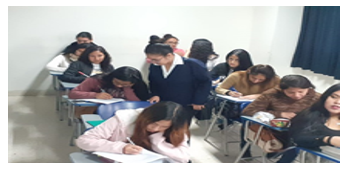 Figure 1: Delivering surveys to the students at a University of North Lima
Figure 1: Delivering surveys to the students at a University of North Lima
As shown in Figure 1, they were given instructions on how to complete the questionnaire. To use exclusively a pencil to mark a single alternative in the question to avoid smearing.
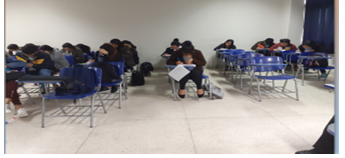 Figure 2: Developing the surveys by the students at a University of North Lima
Figure 2: Developing the surveys by the students at a University of North Lima
As shown in Figure 2, the students carefully concentrated on reading the questionnaire; some students did not understand the questions they did not interpret it in the health field.
The doubts they had about the questions were explained to the students and they were reminded that their answer must be sincere, and the development is individual, not group to get good results.
 Figure 3: Collecting student surveys.
Figure 3: Collecting student surveys.
As shown in Figure 3, it is verified that the entire questionnaire is filled out. If a question doesn’t have an answer, it is returned to the participant to complete so that the questionnaire is valid to be typing to the SPSS to find questions, also if there is missing answer, the survey is eliminated.
The nursing personnel is fundamental for the health study of the university students since it offers them Psycho-emotional support for the social well-being of the university students; because many are unaware of healthy lifestyles or do not practice them and lead a routine life and acquire non-communicable diseases.
3. Results
After obtaining the surveys, the data was synthesized and statistical tables were generated for a better understanding of them, as shown in Table I.
Table 1: Sociodemographic lifestyle data in nursing students from a university of north lima, 2019 (n = 400).
| Participant Information | Total | |
| N | % | |
| Total | 400 | 100 |
| Sex | ||
| Female | 342 | 85,5 |
| Male | 58 | 14,5 |
| Marital Status | ||
| Single | 262 | 65,5 |
| Married | 54 | 13,5 |
| Widowed | 5 | 1,3 |
| Cohabitant | 56 | 14,0 |
| Divorced | 23 | 5,8 |
| Type of Family | ||
| Nuclear | 191 | 47,8 |
| Extended | 43 | 10,8 |
| Amplified | 55 | 13,8 |
| Single parent | 63 | 15,8 |
| Reconstituted | 23 | 5,8 |
| Family equivalent | 25 | 6,3 |
| Occupancy Condition | ||
| Study | 142 | 35,5 |
| Study and work | 258 | 64,5 |
| Degree of Study | ||
| Secondary | 170 | 42,5 |
| University | 156 | 39,0 |
| Technical | 74 | 18,5 |
| Primary Education | 3 | 0,8 |
In Table 1, it has the sociodemographic data of the study participants, there were 400 participating nursing students. The minimum age was 18 years old; the maximum age was 49 years old, the mean being 24.83 years old.
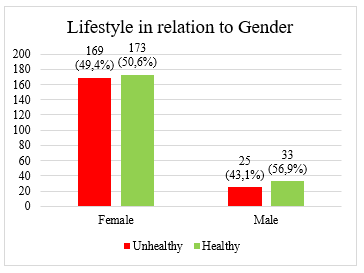 Figure 4: Lifestyle in nursing students at a university in North Lima, 2019 (N = 400)
Figure 4: Lifestyle in nursing students at a university in North Lima, 2019 (N = 400)
Regarding sex, the female sex predominated with 342 students representing 85.5%, followed by the male sex with 58 students representing 14.5%. Regarding marital status, the single person predominates with 262 (65.5%) cases, followed by Cohabitant with 56 (14%) cases, married with 54 (13.5%) cases, divorced with 23 (5.8%) cases, and finally widowers with 5 (1.3%) cases.
Regarding the type of family, nuclear families predominate with 191 (47,8%) cases, followed by the single parent with 63 (15, 8%) cases, amplified with 55 (13,8%) cases, extended with 43 (10,8%) cases, family equivalent with 25 (6,3%) cases and finally reconstituted 23 (5,8%) cases.
Regarding the occupation status of nursing students, 258 study and work (64,5%) cases and only 142 with (35, 5%) cases study.
Regarding the degree of study, 238 students representing 59.5% have secondary education, 117 students representing 29.3% have technical education, 42 students representing 10.5% have university education and finally 3 students representing 0.8% have primary education.
In Figure 4, the lifestyle in nursing students from a university in Lima Norte, it can see that 206 students represent 51.5% have a healthy lifestyle and 194 students that represent 48.5% have an unhealthy lifestyle.
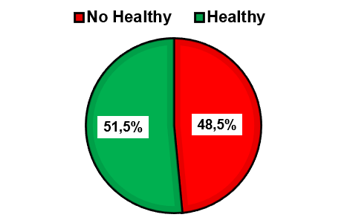 Figure 5: Lifestyle in relation to gender of nursing students from a University of Lima Norte, 2019 (N = 400).
Figure 5: Lifestyle in relation to gender of nursing students from a University of Lima Norte, 2019 (N = 400).
Figure 5 shows the lifestyle in relation to gender of nursing students from a university in North Lima, where 169 (49.4%) who are female have an unhealthy lifestyle, 173 (50.6%) have a healthy lifestyle, 25 (43.1%) who are male have an unhealthy lifestyle and 33 (56.9%) have a healthy lifestyle.
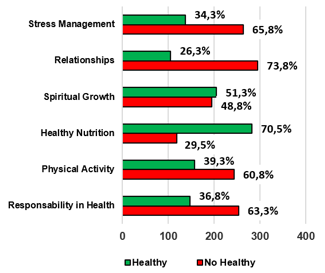 Figure 6: Lifestyle according to its general dimensions that the instrument contains according to a study in nursing students from a university in North Lima, 2019 (N = 400).
Figure 6: Lifestyle according to its general dimensions that the instrument contains according to a study in nursing students from a university in North Lima, 2019 (N = 400).
In Figure 6, Lifestyle in its dimension health responsibility, in nursing students from a university in Lima Norte, it can see that 253 students represent 63, 3%, have an unhealthy lifestyle and 147 students represent 36.8%, have a healthy lifestyle. In the physical activity dimension, in nursing students from a university in North Lima, it can see that 243 students represent 60.8%, have an unhealthy lifestyle and 157 students represent 39.3%, have a healthy lifestyle. In the healthy nutrition dimension, in nursing students from a university in North Lima, it can see that 282 students represent 70.5%, have a healthy lifestyle and 118 students represent 29.5%, have an unhealthy lifestyle. In the growth dimension spiritual, in nursing students from a university in Lima Norte, it can see that 205 students represent 51.3%, have a healthy lifestyle and 195 students represent 48.8%, have an unhealthy lifestyle. In the interpersonal relationships dimension predominates 295 students representing 73.8%, have a healthy lifestyle. In the stress management dimension, in nursing students from a university in Lima Norte, it can see that 263 students represent 65.8%, have an unhealthy lifestyle and 137 students represent 34.3%, have a healthy lifestyle.
4. Discussion
The research work confirms the unhealthy lifestyles in university students based on the articles reviewed in [12] to their study carried out on university students from Iran Shiraz where bad interpersonal relationships were evidenced in the students and based on [11] to their study carried out, low results were evidenced regarding its dimensions; according to [13] to their carried out in Turkey, students have a sedentary life and do not carry out physical activity.
In the study carried out on students from a North Lima university in terms of dimensions, it was clearly shown that a large number of students who do not have good interpersonal relationships with their peers are not responsible for their health; they do not have good stress management and do not carry out physical activity. It leads to a sedentary life. Likewise, in [5], argue that students do not have a good lifestyle and that factors such as tobacco and alcohol show an inappropriate lifestyle.
This type of studies can be applied in other university centers to help the teaching for students and also train teachers so that they can implement educational programs such as physical exercise, stress control, improving lifestyles involves commitment and will.
Promoting lifestyles is a little difficult since students do not put into practice; they always make excuses for not doing it, that’s why, this research work is presented to provide guidance on the situation that university students are in.
5. Conclusion
To conclude in this regarding lifestyle, it is projected from the promotion of the health of the university students, in order to contribute to the universities so that they include programs to have an adequate healthy diet, physical activity, etc.
It is concluded that the university population is made aware of the benefits of irregular practices of physical activities that improve the lifestyle.
It is concluded that counseling is provided to university students to develop educational intervention protocols in relation to healthy life habits.
Conflicts of Interest
The authors declare no conflict of interest.
- E. Bastias, J. Stiepovich, “Una revisión de los estilos de vida de estudiantes universitarios iberoamericanos.,” Ciencia y Enfermeria, 20(2), 93–101, 2014.
- P. Mc Sharry, F. Timmins, “An evaluation of the effectiveness of a dedicated health and well being course on nursing students’ health.,” Nurse Education Today, 44, 26–32, 2016, doi:10.1016/j.nedt.2016.05.004.
- Y. Lara, C. Quiroga, A. Jaramillo, M. Bermeo, “Estilo de vida de estudiantes en primer semestre de odontología de una universidad privada, Cali 2016.,” Revista Odontológica Mexicana, 22(3), 144–149, 2018.
- N. Gormley, V. Melby, “Nursing students’ attitudes towards obese people, knowledge of obesity risk, and self-disclosure of own health behaviours: An exploratory. survey,” Nurse Education Today, 84, 104232, 2020, doi:10.1016/j.nedt.2019.104232.
- A. Montenegro, A. Ruíz, “Factores asociados a los estilos de vida en los estudiantes universitarios. Una aplicación del instrumento fantástico.,” Revista Digital: Actividad Física y Deporte, 6(1), 87–108, 2019.
- Ministerio de Salud, Guías Alimentarias Para La Población Peruana, 1–60, 2019.
- A. Gallardo, M. Alférez, E. Planells, I. López, “La etapa universitaria no favorece el estilo de vida saludable en las estudiantes granadinas.,” Nutricion Hospitalaria, 31(2), 975–979, 2015, doi:10.3305/nh.2015.31.2.8303.
- N. Arias, M. Solera, L. Gracia, P. Silva, V. Martínez, J. Cañete, M. Sánchez, “Levels and patterns of objectively assessed physical activity and compliance with different public health guidelines in university students.,” PLoS ONE, 10(11), 1–15, 2015, doi:10.1371/journal.pone.0141977.
- D. Kazemi, M. Levine, J. Dmochowski, K. Roger Van Horn, L. Qi, “Health behaviors of mandated and voluntary students in a motivational intervention program.,” Preventive Medicine Reports, 2, 423–428, 2015, doi:10.1016/j.pmedr.2015.05.004.
- Organización Panamericana de la Salud, Enfermedades no transmisibles y factores de riesgo, Boletín Epidemiológico, 2019.
- S. Lolokote, T. Hidru, X. Li, “Do socio-cultural factors influence college students’ self-rated health status and health-promoting lifestyles? A cross-sectional multicenter study in Dalian, China.,” BMC Public Health, 17(1), 1–14, 2017, doi:10.1186/s12889-017-4411-8.
- M. Heidari, M. Borujeni, M. Khosravizad, “Health-promoting Lifestyles of Nurses and Its Association with Musculoskeletal Disorders: A Cross-Sectional Study.,” Journal of Lifestyle Medicine, 8(2), 72–78, 2018.
- B. Kara, B. Işcan, “Predictors of Health Behaviors in Turkish Female Nursing Students.,” Asian Nursing Research, 10(1), 75–81, 2016, doi:10.1016/j.anr.2015.12.001.
- M. Al-Qahtani, “Comparison of health-promoting lifestyle behaviours between female students majoring in healthcare and non-healthcare fields in KSA.,” Journal of Taibah University Medical Sciences, 14(6), 508–514, 2019, doi:10.1016/j.jtumed.2019.10.004.
- C. Fernández, P. Baptista, Metodología de la Investigación. 6ta ed. México: Mc Graw-Hill/Interamericana., 2015.
- G. Kuan, Y. Kueh, N. Abdullah, E. Tai, “Psychometric properties of the health-promoting lifestyle profile II: Cross-cultural validation of the Malay language version.,” BMC Public Health, 19(1), 1–10, 2019, doi:10.1186/s12889-019-7109-2.
